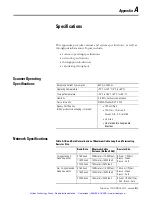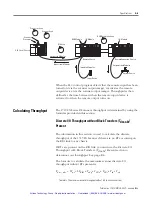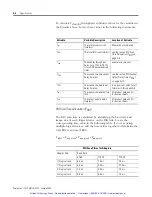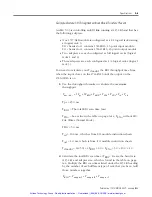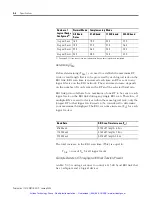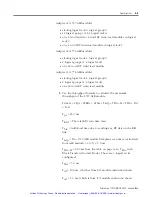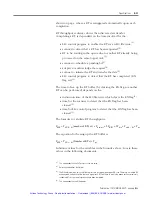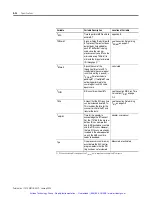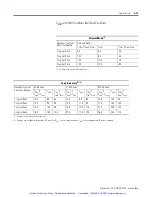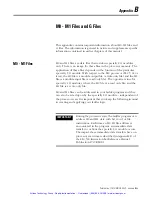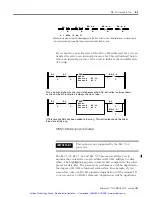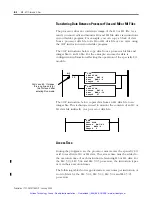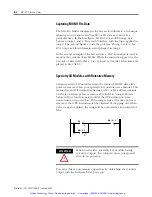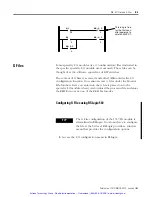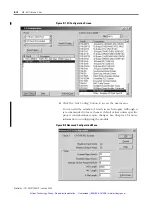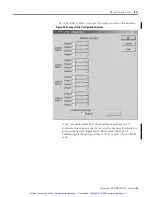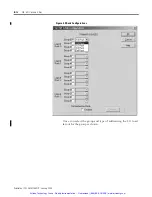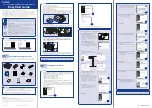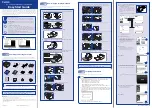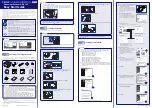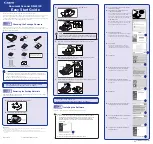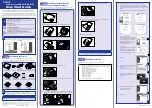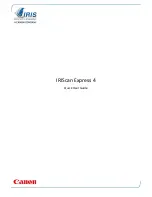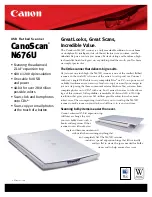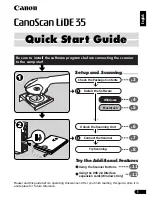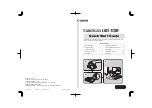
Publication 1747-UM013B-EN-P - January 2005
A-14
Specifications
number of logical devices on the RIO network affects only TRIO, and
only affects TSNo when additional logical racks are used.
When complementary mode is selected, the number of configured
racks is also determined by the number of primary or complementary
racks configured, but not by both. (The maximum number of
configured racks
is 4.) That is, if there is a primary rack configured with a
corresponding complementary rack, that is considered
one
logical
rack. If there is a primary rack configured without a complementary
rack (or vice versa), that also is considered
one
logical rack.
TSNo without M0 File Writes
Normal Mode
(1)
(1) All times shown are in milliseconds (ms).
Number of Logical
Racks Configured
All Baud Rates
T
SNo
if T
upd
≤
T
hold
T
hold
T
SNo
if T
upd
>T
hold
1 Logical Rack
5.0
5.0
2.5
2 Logical Rack
7.0
7.0
4.0
3 Logical Rack
9.0
9.0
5.5
4 Logical Rack
11.0
11.0
7.0
Complementary
(1)
(2)
Number of Logical
Racks Configured
57.6K baud
115.2K baud
230.4K baud
T
SNo
if
T
upd
≤
T
hold
T
hold
T
SNo
if
T
upd
>T
hold
T
SNo
if
T
upd
≤
T
hold
T
hold
T
SNo
if
T
upd
>T
hold
T
SNo
if
T
upd
≤
T
hold
T
hold
T
SNo
if
T
upd
>T
hold
1 Logical Rack
6.0
5.0
4.0
7.0
7.0
4.0
10.0
9.0
4.0
2 Logical Rack
9.0
8.0
5.0
10.0
10.0
6.0
12.0
12.0
7.0
3 Logical Rack
12.0
11.0
7.0
12.0
12.0
8.0
16.0
16.0
10.0
4 Logical Rack
15.0
14.0
9.0
16.0
16.0
10.0
21.0
22.0
13.0
(1) All times shown are in milliseconds (ms).
(2) Although a faster baud rate decreases RIO scan time (T
RIO
), it has an inverse affect on T
SNo
when complementary I/O mode is selected.
Artisan Technology Group - Quality Instrumentation ... Guaranteed | (888) 88-SOURCE | www.artisantg.com


